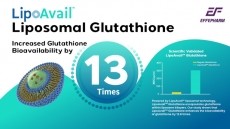Rousselot builds bone health science behind collagen
A study with mice with their ovaries removed - used as a model for postmenopausal osteoporosis - found that the collagen was associated with an increase in the activity osteoblasts – cells responsible for cell formation.
Furthermore, the ingredient was associated with a decrease in activity of osteoclasts – cells responsible for bone resorption, report the researchers in the journal Bone.
“The results of the present study indicate that hydrolyzed collagen modulates bone formation and mineralization of the bone matrix by stimulating osteoblast growth and differentiation while reducing osteoclast differentiation,” wrote the researchers, led by Fanny Guillerminet from France’s INRA.
“These effects led to growth of the external diameter of the cortical zone. These results could be of potential interest for nutritional intervention in the prevention of bone loss,” they added.
The study uses Rousselot’s Peptan branded ingredient, and the company supported the study.
The results require support from additional studies particularly in humans, may see the ingredient established in the bone health market.
Osteoporosis is estimated to affect about 75m people in Europe, the USA and Japan. According to the International Osteoporosis Foundation, the total direct cost of osteoporotic fractures is €31.7bn in Europe, and 17.5bn in the US (2002 figure). The total annual cost of osteoporosis in the UK alone is over £1.7bn (€2.5bn), equivalent to £5m (€7.3m) each day.
Study details
Guillerminet and her co-workers divided animals into three groups: One group acted as the control and did not have their ovaries removed; one group had their ovaries removed and consumed a normal diet; the final group was the same as the second except the diet was supplemented with Peptan, said the researchers.
After 12 weeks of study, no significant difference in bone mineral density between the control and Petpan-fed group was observed. However, a reduction in BMD in the ovariectomised animals not fed the hydrolysed collagen was observed.
A reduction in levels of a peptide called carboxy terminal telopeptide (CTX), a usual marker of bone resorption, were lower in the collagen-fed group, said the researchers.
“It is concluded that dietary hydrolyzed collagen increases osteoblast activity (as measured in primary tissue culture), which acts on bone remodeling and increases the external diameter of cortical areas of the femurs,” concluded the researchers.
Source: Bone
Published online ahead of print, doi:
“Hydrolyzed collagen improves bone metabolism and biomechanical parameters in ovariectomized mice: An in vitro and in vivo study”
Authors: F. Guillerminet, H. Beaupied, V. Fabien-Soule, D. Tome, C-L. Benhamou, C. Roux, A. Blais













